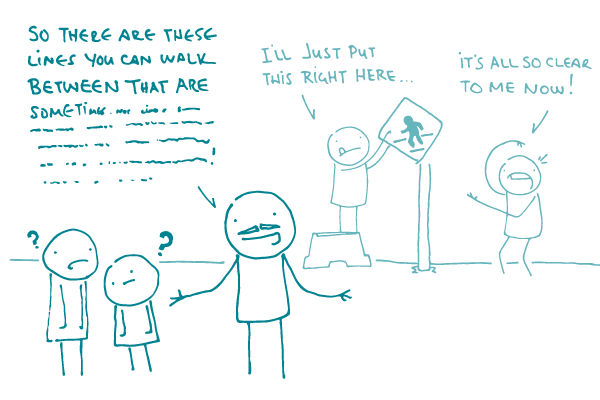
Here at We ❤ Health Literacy Headquarters, we talk a lot about adding visuals to health content. This week, we’re talking about a visual element that’s both simple and powerful: the icon.
Icons are simple representations of concepts or actions — visual abbreviations, if you will. They make it really easy to communicate without a lot of words. This, of course, is great for everyone — but it’s especially important for low literacy readers or folks who aren’t entirely comfortable reading the language you’re communicating in.
Icons also help your readers make an immediate visual connection with your health material, which draws them in and gets them itching to learn more.
As you can probably tell, we’re pretty psyched about using icons. We want you on board, too! Here are a few particulars to get you going:
- Keep your icons simple and clear (complex icons can be confusing)
- Use icons to support, but not to replace, your content
- If you use icons for website navigation, also include a clear label (this will help you avoid a hamburger menu icon horror story)
- Use icons to highlight the positive (if you use them to illustrate the negative, your readers could end up doing exactly what you don’t want them to do)
- Test the icons to make sure your audience understands them
Ready to get started? Luckily, you don’t have to create icons from scratch. There are tons of free icons available from the Noun Project and other similar sites.
And just to be super clear: icons and clip art aren’t the same. We urge you, as ever, to skip the clip art.
The bottom line: Use icons to draw your readers in and support your health content.
Browse recent posts